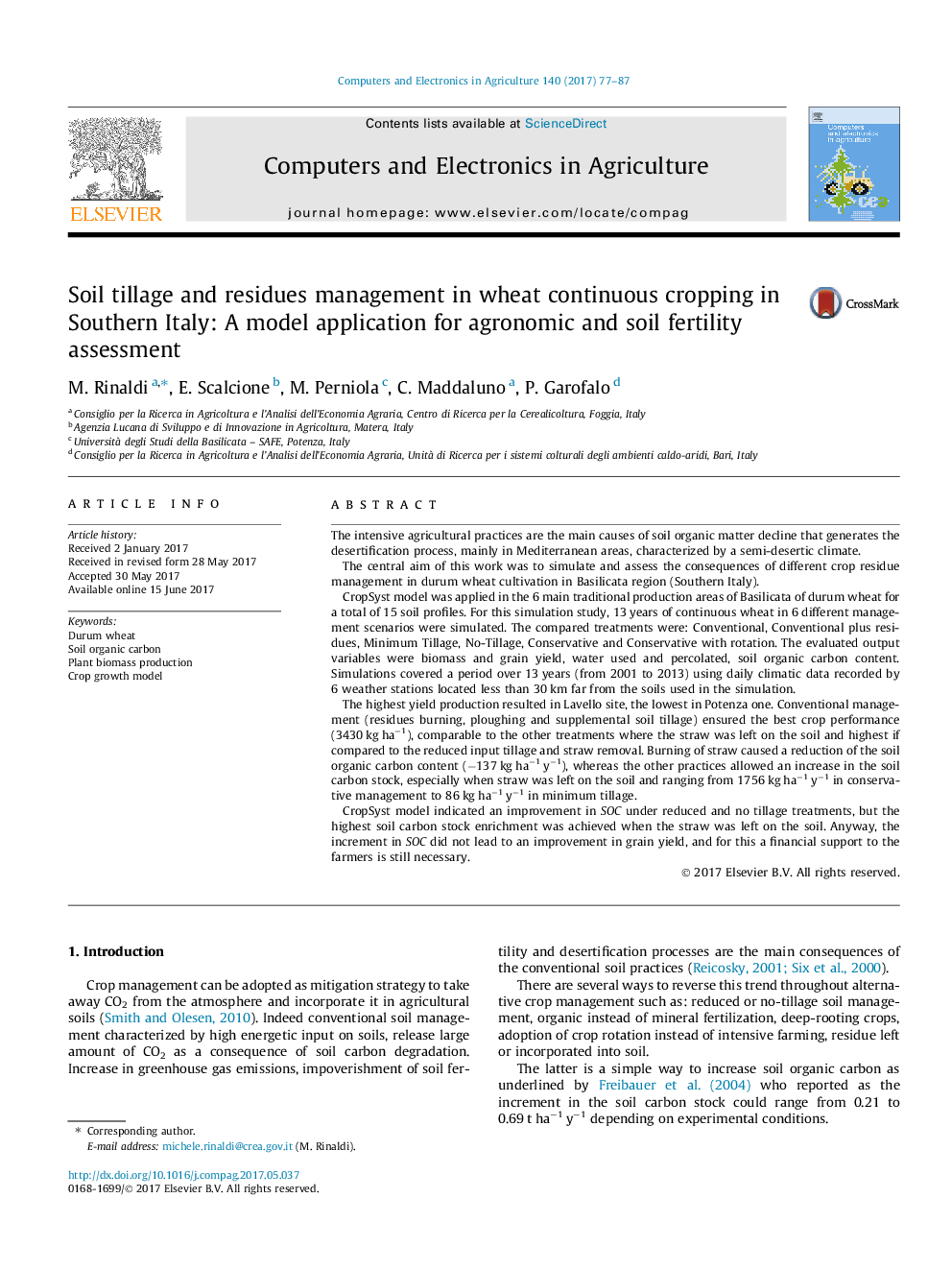| کد مقاله | کد نشریه | سال انتشار | مقاله انگلیسی | نسخه تمام متن |
|---|---|---|---|---|
| 6458567 | 1421108 | 2017 | 11 صفحه PDF | دانلود رایگان |
- To simulate and assess the consequences of crop residue management in durum wheat.
- CropSyst model indicated an improvement in SOC under reduced and no tillage treatments.
- The highest SOC enrichment was achieved when the straw was left on the soil.
- The increment in SOC did not lead to an improvement in grain yield.
The intensive agricultural practices are the main causes of soil organic matter decline that generates the desertification process, mainly in Mediterranean areas, characterized by a semi-desertic climate.The central aim of this work was to simulate and assess the consequences of different crop residue management in durum wheat cultivation in Basilicata region (Southern Italy).CropSyst model was applied in the 6 main traditional production areas of Basilicata of durum wheat for a total of 15 soil profiles. For this simulation study, 13 years of continuous wheat in 6 different management scenarios were simulated. The compared treatments were: Conventional, Conventional plus residues, Minimum Tillage, No-Tillage, Conservative and Conservative with rotation. The evaluated output variables were biomass and grain yield, water used and percolated, soil organic carbon content. Simulations covered a period over 13 years (from 2001 to 2013) using daily climatic data recorded by 6 weather stations located less than 30 km far from the soils used in the simulation.The highest yield production resulted in Lavello site, the lowest in Potenza one. Conventional management (residues burning, ploughing and supplemental soil tillage) ensured the best crop performance (3430 kg haâ1), comparable to the other treatments where the straw was left on the soil and highest if compared to the reduced input tillage and straw removal. Burning of straw caused a reduction of the soil organic carbon content (â137 kg haâ1 yâ1), whereas the other practices allowed an increase in the soil carbon stock, especially when straw was left on the soil and ranging from 1756 kg haâ1 yâ1 in conservative management to 86 kg haâ1 yâ1 in minimum tillage.CropSyst model indicated an improvement in SOC under reduced and no tillage treatments, but the highest soil carbon stock enrichment was achieved when the straw was left on the soil. Anyway, the increment in SOC did not lead to an improvement in grain yield, and for this a financial support to the farmers is still necessary.
Journal: Computers and Electronics in Agriculture - Volume 140, August 2017, Pages 77-87
